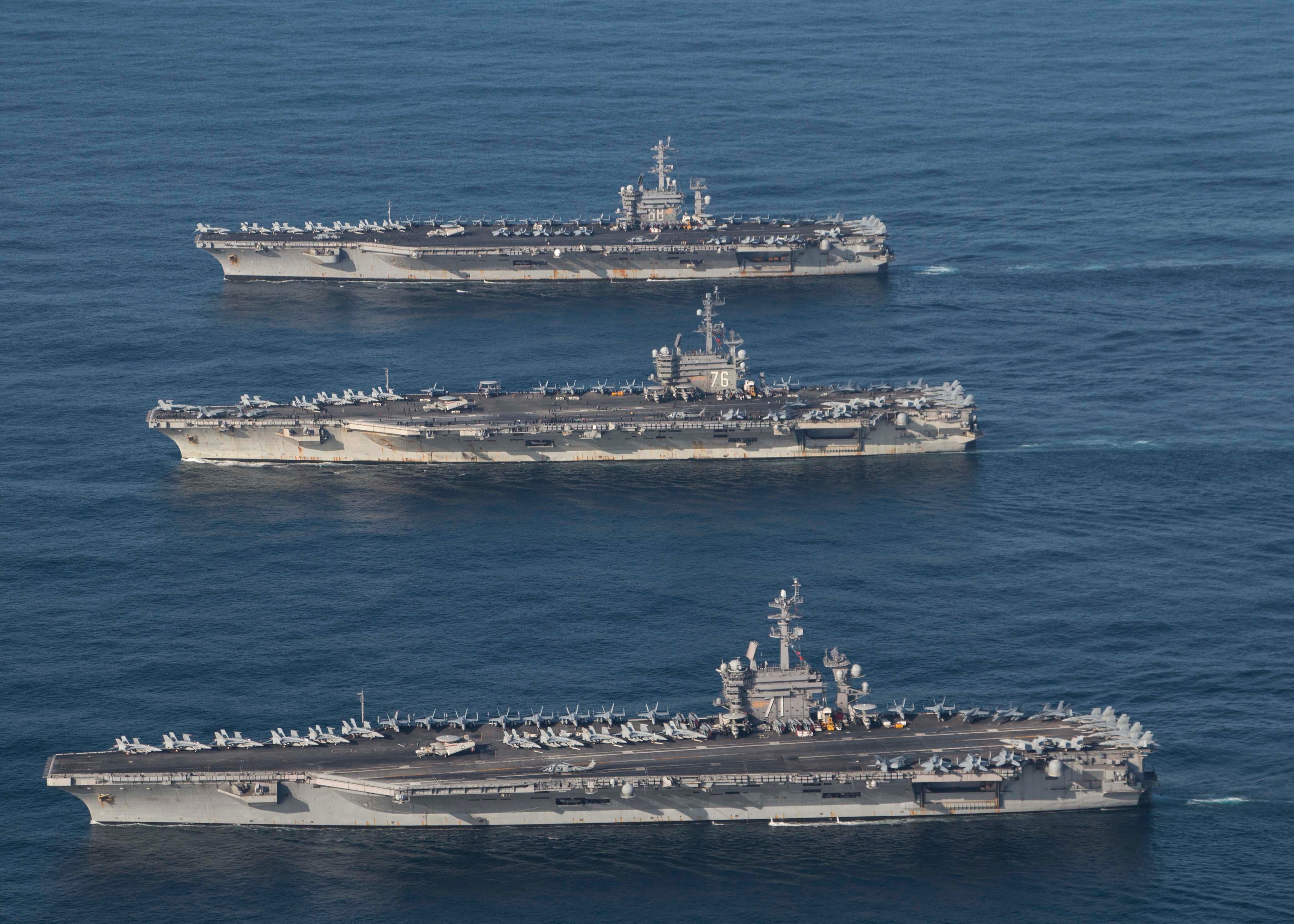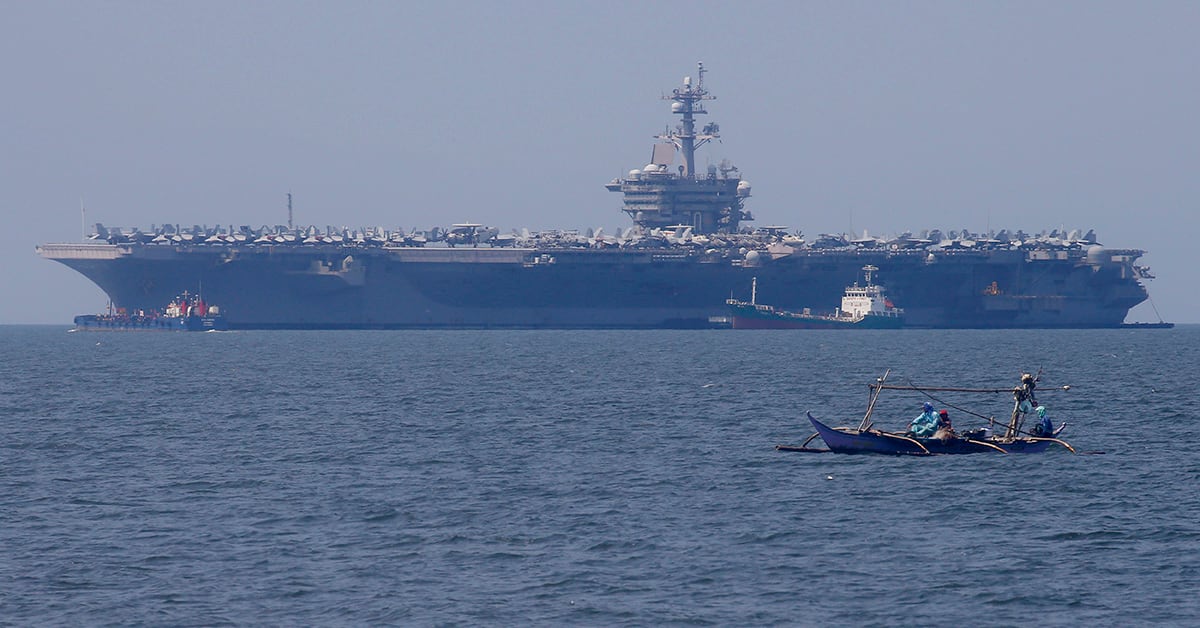ABOARD THE USS GEORGE H. W. BUSH, NORFOLK, Va. — A sharp increase in Russian naval activity in the Arctic and north Atlantic in the years since its invasion of eastern Ukraine has prompted the U.S. Navy to resurrect a command it disestablished seven years ago.
At a ceremony marking Adm. Phil Davidson’s change of command with Adm. Chris Grady as the head of U.S. Fleet Forces Command, Chief of Naval Operations Adm. John Richardson announced the Navy was set to re-establish the 2nd Fleet.
The command was merged into Fleet Forces Command in 2011, but the Navy has been talking about bringing it back since it appeared as a recommendation in the Strategic Readiness Review into last year’s 7th Fleet collisions.
The move is the latest sign that the Navy is focusing its attention away from the war on terrorism and toward its major competitors China and Russia.
“This is a dynamic response to the dynamic security environment,” Richardson told reporters onboard the carrier George H. W. Bush May 4. “So as we’ve seen this great power competition emerge, the Atlantic Ocean is as dynamic a theater as any and particular the North Atlantic, so as we consider high-end naval warfare, fighting in the Atlantic, that will be the 2nd Fleet’s responsibility.”
RELATED

In the announcement, Richardson credited Davidson for the analysis that led to the decision.
“It is in large part due to the analysis of Adm. Davidson and his team, in response to a changing security environment, that this summer we will stand up the U.S. 2nd Fleet here in Norfolk to train, certify and command U.S. naval forces at the very highest levels of naval warfare to the emerging global contingencies in the Atlantic,” Richardson said.
The announcement from Richardson was immediately followed by an announcement from the Office of the Secretary of Defense that it has offered to host a new NATO Joint Force Command for the Atlantic at Naval Station Norfolk.
Davidson is going on to lead U.S. Pacific Command.
RELATED

Change gonna come
The secretary of the Navy’s SRR recommended that 2nd Fleet operate similarly to 3rd Fleet, which trains and certifies West Coast ships for deployment and has been increasingly taking operational command of those ships downrange.
Richardson said in Norfolk that the command would come online this summer.
No decision has yet been made on who will be the commander of the new 2nd Fleet but the decision is expected in the coming weeks, said a Navy official who spoke on background.
“It will have the [same] command and control structure of of any fleet, really and I say that in a mind that it is also going to be very tailored to the mission — high end blue water force elements,” Richardson said.
“We’re focused on effectiveness here, so I don’t think it’s going to be a tremendous cost burden, and what you get is this operational focus on high-end in the Atlantic, that will be woth every molecule of effort that we spend.”
The standing up of 2nd Fleet is just one change that the Navy is set to grapple with over the coming years. Recent comments from Defense Secretary Jim Mattis have hinted at even more fundamental changes in how the Navy deploys and does business.
Mattis told lawmakers in April that he wants the Navy to move away from rotational deployments and focus more on being unpredictable — making shorter, perhaps more frequent deployments that focus on keeping the enemy guessing at its next move.
“The way you do this is [to] ensure that preparation for great power competition drives not simply a rotational schedule that allows me to tell you, three years from now, which aircraft carrier will be where in the world,” he told House lawmakers. “When we send them out, it may be for a shorter deployment. There will be three carriers in the South China Sea today, and then, two weeks from now, there’s only one there, and two of them are in the Indian Ocean.
“They’ll be home at the end of a 90-day deployment. They will not have spent eight months at sea, and we are going to have a force more ready to surge and deal with the high-end warfare as a result, without breaking the families, the maintenance cycles — we’ll actually enhance the training time.”
A test of a new, more unpredictable model could be on the horizon as Pentagon leaders weigh whether to withhold the Harry S. Truman Carrier Strike Group from deploying to Middle East, opting instead to keep it in the European theater as a check on Russia.
David B. Larter was the naval warfare reporter for Defense News.
Mark D. Faram is a former reporter for Navy Times. He was a senior writer covering personnel, cultural and historical issues. A nine-year active duty Navy veteran, Faram served from 1978 to 1987 as a Navy Diver and photographer.







